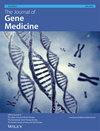Identification and validation of non-coding RNA-mediated high expression of IQGAP3 in poor prognosis of lung adenocarcinoma
Abstract
Background
The primary reason for tumor-related deaths worldwide is lung adenocarcinoma (LUAD). The oncogene IQ motif-containing GTPase activating protein 3 (IQGAP3) is crucial for contributing to tumor initiation and progression. However, the precise function and molecular mechanism of IQGAP3 in LUAD remain unknown. The present study aimed to investigate the expression, prognosis, mechanism and tumor immunity associated with IQGAP3 in LUAD.
Methods
The relationship between IQGAP3 and the poor prognosis of LUAD was analyzed using The Cancer Genome Atlas (TCGA) database. This analysis was further validated on lung cancer tissues and cell lines. The function of IQGAP3 was investigated by silencing it in LUAD cell lines. To predict microRNA (miRNA) and long non-coding RNA associated with IQGAP3, the starBase database was utilized, and the predictions were verified by enhancing the function of miRNA. Finally, the relationship between IQGAP3 and tumor immunity was evaluated using Spearman's correlation analysis.
Results
TCGA database revealed that higher levels of IQGAP3 were associated with advanced tumor stage, N stage and poor prognosis in LUAD patients. To confirm that, we conducted experiments on lung cancer tissues and cell lines and found that silencing IQGAP3 significantly inhibited tumor cell proliferation and migration. The expression of IQGAP3 showed a negative correlation with has-miR-101-3p and has-miR-135a-5p, whereas it showed a positive correlation with GSEC, AC005034.3 and TYMSOS. Furthermore, the introduction of miRNA-mimics into lung cancer cell resulted in a significant inhibition of cancer cell growth and migration. Following that, the level of IQGAP3 showed a positive correlation with the infiltration of immune cells in tumors.
Conclusions
These results reveal that IQGAP3 significantly promotes LUAD progression and could serve as a prognostic biomarker for LUAD. Furthermore, IQGAP3 is most likely regulated by the GSEC/TYMSOS-hsa-miR-101-3p axis and the AC005034.3-hsa-miR-135a-5p axis in LUAD.


 求助内容:
求助内容: 应助结果提醒方式:
应助结果提醒方式:


